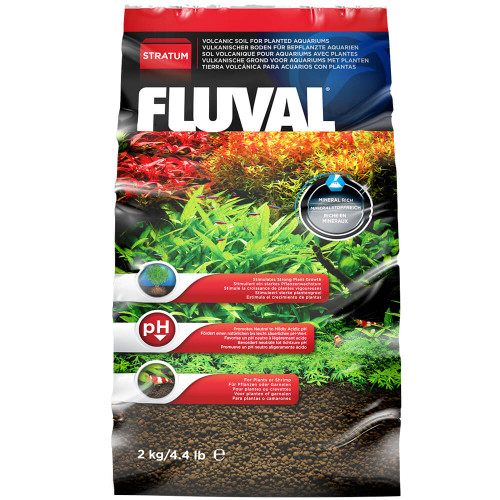What is the Best Substrate For Planted Tanks?
Posted by Artur Wlazlo on 8 Feb 2021
Best Substrate for Aquarium Plants
Before you start looking at different substrate brands for your tank, you need to learn some basic facts about this aquarium essential. Learning as much as you can about choosing the best substrate for planted tanks will lead you to make the right decision for your tank. If you’re shopping for substrate, check out this Modern Aquarium guide first!
Do You Even Need Substrate?
If you don’t have any live aquarium plants in your tank, then no, you don’t really need substrate. Many hobbyists raise their fish in bare-bottom tanks. However, substrate provides visual interest to your aquarium, induces a more natural behavior in your fish, and helps your plants get more nutrients. While some plants can get most of their nutrients from the water (water column feeders), others are root feeders that require specific substrate.
Different Types of Substrate
In addition to different brands that each pack their substrate with unique, patented nutrient formulas, there are several substrate types available, including sand, gravel, complete, and alternative substrates. Deciding which of these is the best substrate for planted tanks can be difficult, so here’s a breakdown of how they work to get you started.
Sand Substrate
We generally don’t recommend getting any fine sand substrates for your planted aquarium, as the grains of sand may compact too tightly over time and inhibit the uptake of nutrients through the roots. However, there are some plants that do well with fine sand substrate. If you choose plants that do not need substrate to thrive, such as anubias or java fern, sand may be the best substrate for your aquarium plants because they attach to and grow on rocks or driftwood. You can also choose to grow your plants in pots, and we have a great selection of potted plants.
If you love the look of fine sand substrates and choose to keep plants, you should remember to provide appropriate fertilization to your plants. There are many liquid fertilizers to choose from, and some of the most popular include Thrive+ aquarium plant fertilizer for low-tech tanks or Seachem Flourish.
Gravel Substrate
While gravel is not the best substrate for planted tanks, it’s still a great choice for undemanding aquarium plants and, with supplemental fertilization, can allow you to grow most, if not all, aquarium plants in your aquarium.
Gravel allows the plants to grab on and root to something more substantial than sand, and its larger grain size ensures proper water flow, preventing anaerobic conditions and resulting in proper root growth and easy nutrient uptake. Gravel is also a very popular option among aquarium enthusiasts because it comes in so many different colors, shapes, and sizes. If you have any plants that have more extended, complex root systems, such as amazon swords, you’ll need a deeper layer because these plants require something to help them root more securely.
An important consideration before getting gravel: don’t forget about your fish! Some fish will dig or shift gravel from one place to another (oftentimes in preparation for spawning). The best substrate for planted tanks in these cases is a larger size grain to prevent them from doing too much “redecorating” in your tank.
Our Recommendation of the Best Substrate for Aquarium Plants

One of our favorite plant substrates is the compressed lava soil from Fluval. This is one of the best substrates for planted tanks because it is soft, mineral-rich, and porous, supports neutral pH, and helps nitrifying bacteria colonize — all of which encourages healthy plant growth. Fluval Stratum won’t cause any water discoloration and is the perfect choice for freshwater tanks!
Substrates at Modern Aquarium
Modern Aquarium offers a comprehensive selection of tank care and maintenance products, like the best substrate for planted tanks. When you check out our substrate options, don’t forget to take a look at our lighting selection, filtration offerings, and so much more!

